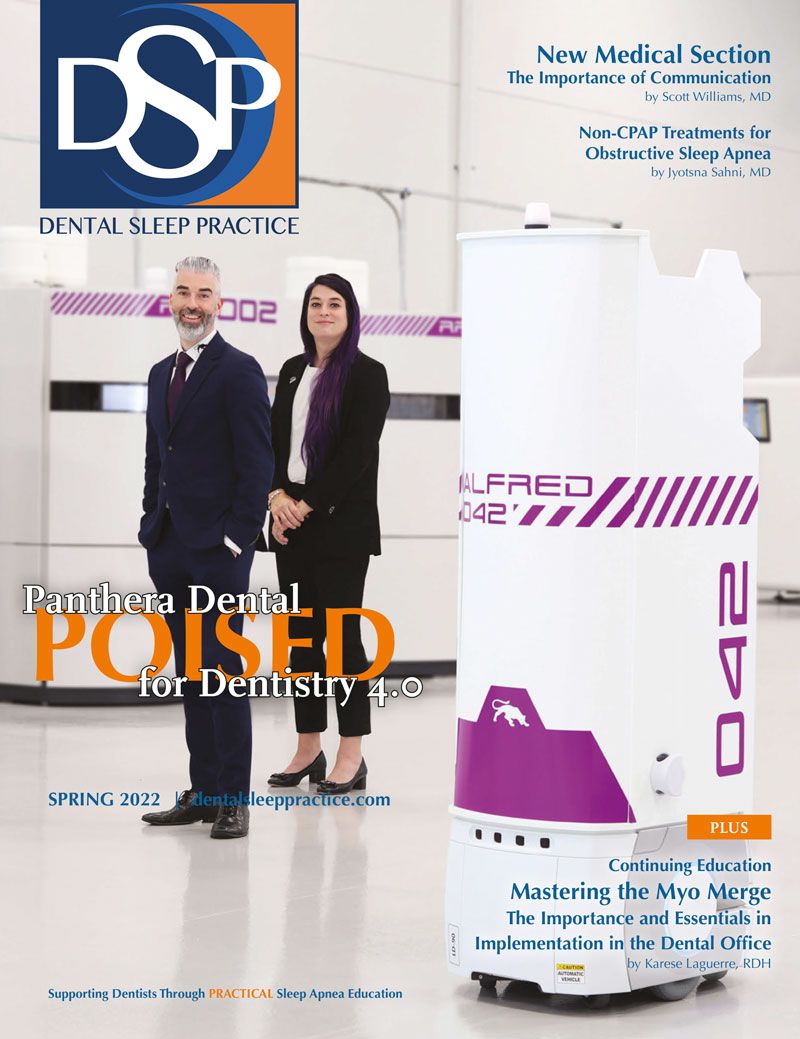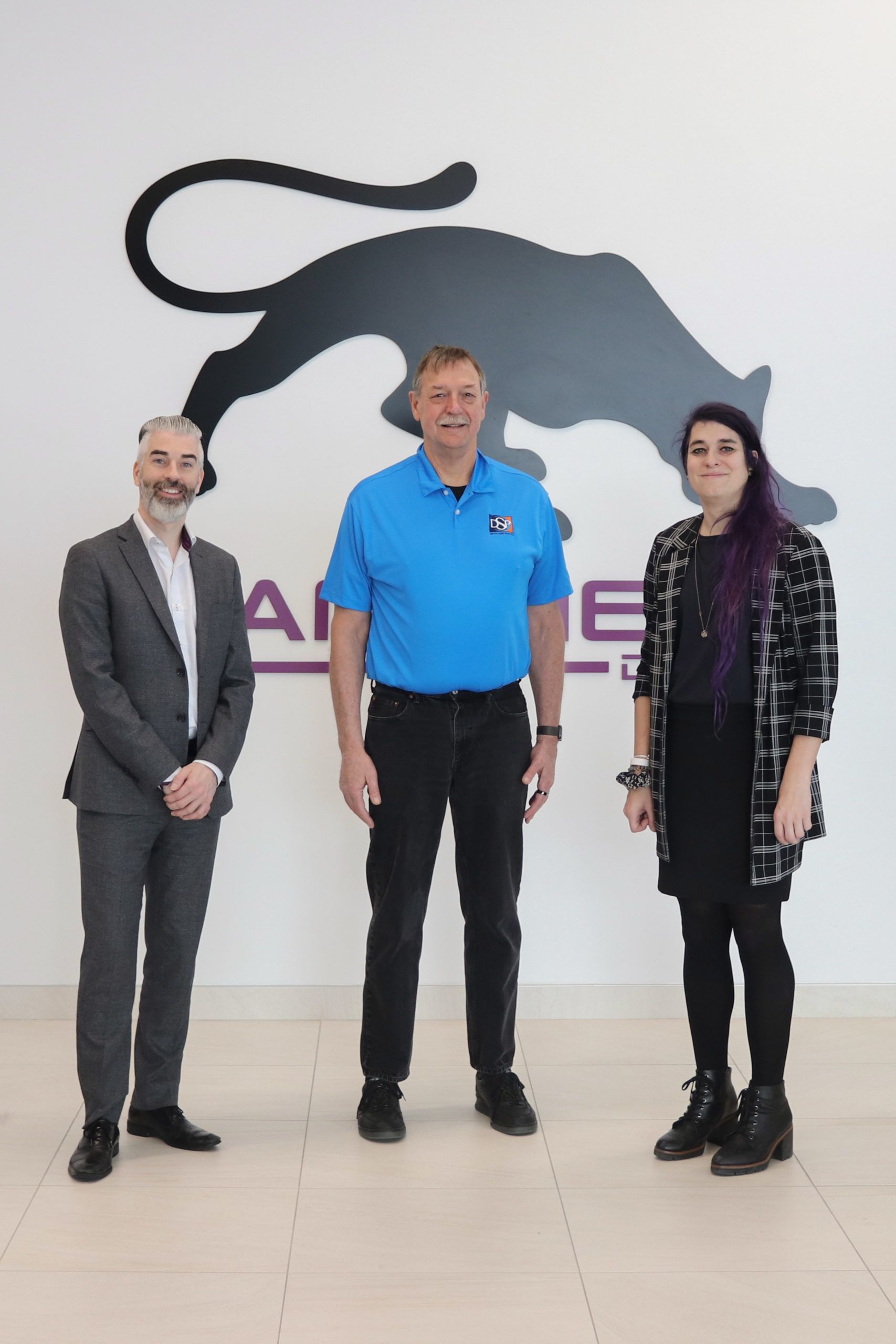Panthera Dental: Poised for Dentistry 4.0
Manufacturing is entering a new phase – in history, there have been four major shifts. The first change was external power replacing human work, the second, mechanical assembly lines and the third, the entry of computers to the creative process. Phase 4.0 is when the machines, using AI, connect with each other to maximize productivity and efficiency.
FEBRUARY 28, 2022
The first automobiles were built by hand by their inventors. Demand soon resulted in builders coming together to put the machines together, by hand, one at a time. It wasn’t until Henry Ford created the moving assembly line that enough cars could be produced to meet the needs of the population. Today’s F150 is put together with up-to-date versions of that same assembly line – lots of people plus one robot to place the windshield glass. Tesla reinvented the assembly line, using 160 robots linked to purpose-built software. Onsite engineers and computer programmers can change anything nearly immediately. Ford uses Phase 2 manufacturing with enhancements; Tesla, and now Panthera Dental, are working in Phase 4 industries.
Back to dental devices to maintain an open airway – begun by entrepreneur dentists in their own offices, soon embraced by dental restorative laboratories. More recently, we’ve seen the third industrial phase introduced. Manufacturers are using CAD design, 3D printing, and CAM – computer milling machines to create custom devices out of raw materials. Humans apply design talents and send instructions to the machines, one by one. Increasing efficiency requires more humans, more skills, and more machines. A faster assembly line.
Can this thinking provide the answer to millions of patients who need a dental device? We are witnessing a CPAP recall, the rise of consumer sleep technology and the lowering of barriers to diagnosis and medical decision making around sleep related breathing disorders. A tsunami of demand for dentist-driven oral appliance therapy is at hand. Is the industry ready to meet a sudden need for tens, hundreds, of thousands of oral appliances?
Panthera Dental’s Robichaud family leaders are visionaries. Spinning up the traditional assembly process to be ready to make more devices was too small. After all, it was this family who developed the world’s first CAD-CAM oral appliance, implant bar, and maxillofacial prosthesis. They wrote the very first software that made 3D printed nylon devices possible. A version of that program is still in use today in France. After their previous company BioCAD was acquired by Nobel BioCare, who is not present in the sleep appliance space, the family formed Panthera Dental, and built from the ground up a suite of new generation software dedicated to implants, prosthetic and sleep. Today the company is run with many of the same early team, including the software engineer who wrote the first ever sleep CAD-CAM code and the lab artist who originally made sleep appliances by hand. Today’s 3D print engine is the result of decades of experience and is entirely contained in the same network that runs Panthera. Bug fixes, upgrades, and innovations are done daily by the engineers working only steps away from the production floor.
Not a production floor like you might think of. When Tesla bought an old car factory, they installed skylights and painted the floor with white enamel to emphasize light and cleanliness. Two years ago, Panthera’s third production facility opened to incorporate every innovation to enhance outcome detail, the importance of work-life balance in the team, and 4.0 manufacturing. When milling an implant bar from a puck of titanium, or using a world-class 3D printer to create titanium maxillofacial custom implants and prosthesis, tolerances are in the single-digit microns. Keeping those promised fit standards was part of building design – the floors are three times the thickness code requires, just to make sure traffic vibrations don’t disturb the milling robots and lose precision. Besides the metal structures, Panthera makes more than the DSAD Classic and DSAD X3 mandibular advancement devices – they are soon to be joined by some innovative oral orthotic designs being tested. Meeting patient needs via dentist-customer ideas.
Manufacturing 4.0 also requires efficient use of expensive resources. Dental devices are printed using laser-sintered Polyamide 12 – a standard medical-grade nylon material, in batches of dozens at a time – but there’s no waiting to ‘fill the machine’ if that would hold up delivery to the patient breathing badly. Panthera’s software uses artificial intelligence to track every case from order to delivery date, placing it in front of the expert designer, sending the code to the right printer, and guiding the QC department for which order comes next. Even shipping is directed to reduce delivery times. Machines are interconnected and signal the humans responsible at each step to create efficiencies. Any need to move faster can be driven by the AI – not a faster production line, but simply upscaled versions of what happens every day at Panthera. Work trays are distributed around the facility not by people struggling to open doors with armloads of cases, but by Alfred, a fully autonomous mobile robot. He glides on his electronic rounds, avoiding people and obstacles, like your Roomba with shelves. Efficient, and fun! More machines can easily be brought online, more designers trained because everything is in-house. The AI even helps plan for production peaks and valleys – no team member is going to face an unmanageable workload, unwanted overtime, and an unexpected interference with their home life.
[…]
by Steve Carstensen, DDS, FAGD, FACD, FICD, D.ABDSM
Continue reading the article here:






